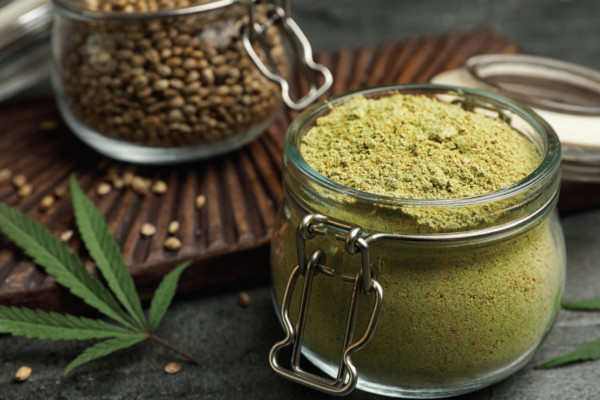It’s fair to say the tide has turned when it comes to cannabis use in the U.S. Most of the country (29 states) now allows medical marijuana sales, while 9 states plus Washington, D.C., allow recreational use. In January, California—home to a tenth of the U.S. population and the world’s sixth-largest economy—legalized recreational use. Today you can even get a four-year degree in marijuana through a program developed at Northern Michigan University. According to almost everyone working in the cannabis industry, federal legalization isn’t a question of “if” but “when.”
A big reason for that certainty is the amount of money being made—and the amount estimated to be made in the future. Research firm Cowen & Co. estimates that the legal U.S. cannabis industry could reach $75 billion in sales by 2030, according to Bloomberg. Washington state collected an astounding $319 million in taxes and licensing fees last year on $1.3 billion in sales, while Colorado collected $247 million in taxes and fees on $1.5 billion in sales. From state taxes to the growing number of cannabusiness investors, there is a lot of green being made from green; those who are profiting are unlikely to see these new legalization initiatives rolled back without a fight. The industry is also creating jobs, with at least 200,000 people working in the cannabis industry in the U.S. today according to New Frontier Data, which estimates the number could reach 630,000
workers by 2025.
Tax revenues and jobs are turning politicians across the aisle into legalization advocates. This month former Republican House Speaker John Boehner, who had previously rejected marijuana legalization, made headlines when he announced he would join the board of Acreage Holding, which invests in marijuana companies in 11 states, saying his thinking had “evolved” on the issue.
This evolution is making it easier for cannabis consumers to open up about their use, which further normalizes the industry. Below, we’ll explore how this normalization has brought new opportunities to food innovators.

Cannabis cuisine
As one of the oldest cultivated crops in the world, cannabis has a long history as an ingredient in food. Ancient Chinese civilizations used hemp seeds for cooking and to extract oil, and the seeds are a traditional ingredient in shichimi togarashi, the trending spice blend that dates back to 17th-century Japan. Long before it showed up in brownies, Moroccans were incorporating hash into majoun, a candy made with dates and spices. Cannabis shows up in recipes from India, Indonesia, countries across Africa and South America, and, of course, Jamaica, where it plays an important role in the Rastafari religion.
But as any cannachef will tell you, cooking with cannabis isn’t as easy as throwing some ground cannabis into the batter and calling it a day. Cannabis must be properly decarboxylated (heated for designated lengths of time) to activate the cannabinoids that get you high (some believe that raw, unheated cannabis has health benefits, but it won’t get you high).
When cooking with cannabis, it’s typically heated in some type of fat, like coconut oil or butter, because THC bonds with fat molecules, hence the rise of cannabutters and canna-oils (though new powders and seasonings are hitting the market that can be added to just about anything).
Cannachefs must also consider:
- Temperatures – those that are too high can destroy the compounds
- THC percentages – different strains can have wildly different potencies
- Absorption – THC and CBD can be absorbed through the stomach, saliva/mouth, or a combination, each with differing effects
- Metabolization – drinks and liquids can take effect far quicker than dense baked goods
Individuals also react differently to edibles, and many chefs are finding that education has become an important part of their mission. For customers who have no experience with cannabis or haven’t had an edible since a poorly-made pot brownie in college, the number of new products and the potency of new strains and properly-made edibles can be surprising (states like Washington and Colorado limit edibles to 10 mg per serving).
Most chefs suggest starting with a small amount and waiting for an hour or two before eating any more. Even experienced cannachefs admit that planning an infused meal can be difficult, with dishes that may feature different dosages and individual diners eating different amounts of each course.
The specialized knowledge required to create high-quality edibles has opened a market for cooks and chefs who are recognized experts, even celebrities, within the world of cannabis cuisine. Food writer Laurie Wolf, who has become known as the “Martha Stewart of edibles,” regularly contributes recipes to magazines and has written multiple cannabis cuisine books. JeffThe420Chef is the author of “The 420 Gourmet: The Elevated Art of Cannabis Cuisine,” which features recipes for teriyaki-glazed salmon with garlic canna-aioli and brussels sprouts with canna-sesame oil.
As more chefs begin working with cannabis as an ingredient, they are finding new ways to pair the flavor profiles of particular strains with complementary flavor profiles. They are also partnering with manufacturers to create appealing products for the cannabis market.
It may be a young industry, but cannabusiness entrepreneurs have been quick to stake their claim in the growing market. While there are plenty of gummies, candies, and brownies on dispensary shelves, today the edibles industry is as varied as the food industry as a whole. Customers in legalized states can find cannabis-infused drinks, granola bars, macarons, beef jerky, even almond milk (Mary Jane Juice Co.) and marinara sauce (Flourish Cannabis).
Cannabis branding and marketing are also evolving. While any dispensary’s shelves will have numerous products with pun-heavy names and psychedelic imagery, many manufacturers are adopting high-quality, minimalist, on-trend branding to actively combat the dorm room sensibility and cultivate newfound respectability.
California-based MedMen opened a medical dispensary on New York’s Fifth Avenue that resembles an Apple store, with sleek wood tables holding built-in tablets featuring the store’s products. “This is cannabis in the digital age,” CMO B.J. Carretta told Time. “This isn’t about stoner culture.”
Major food companies are intrigued by the changes—and profit potential. Constellation Brands, which owns brands like Corona, purchased a nearly 10% stake in Canopy Growth Corp., the world’s largest publicly traded cannabis company. And there are opportunities for ancillary businesses. Existing food brands could position their foods and snacks as munchies-friendly options.

Sensimilla sentiment
There is an enormous opportunity in the retail segment of THC products. The increasing social acceptance of cannabis is driving up consumer desire for more options. Visual Capitalist put together a great report detailing current and future anticipated THC-derived product spending.
One of the largest retail sectors cannabis has been making its way into is the beverage sector. The cannabis-infused drink market has seen steady growth over the past few years, reaching nearly $3 million in market share. The biggest opportunity? Most infused drinks don’t taste all that great. In THC food products, different layers of flavor can help disguise the weed taste. Flavored water doesn’t make for much of a disguise.
Infused beverage creators who can nail flavors will have an enormous opportunity to monopolize the market. Many consumers enjoy infused-drinks because their effects don’t linger like other forms. You could knock back a THC-infused tea before a movie and be back to “normal” by the time it’s over.

The future
While there are still plenty of issues to iron out, the cannabis industry is certainly growing. With plenty of investment flooding in, additional states set to potentially legalize recreational or medical use in the future, and possible federal changes on the horizon, interest in cannabusiness is at an all-time high, so to speak.
That interest and growth have the potential to disrupt entire industries. The industry should view cannabusiness as an enormous opportunity to seize.






